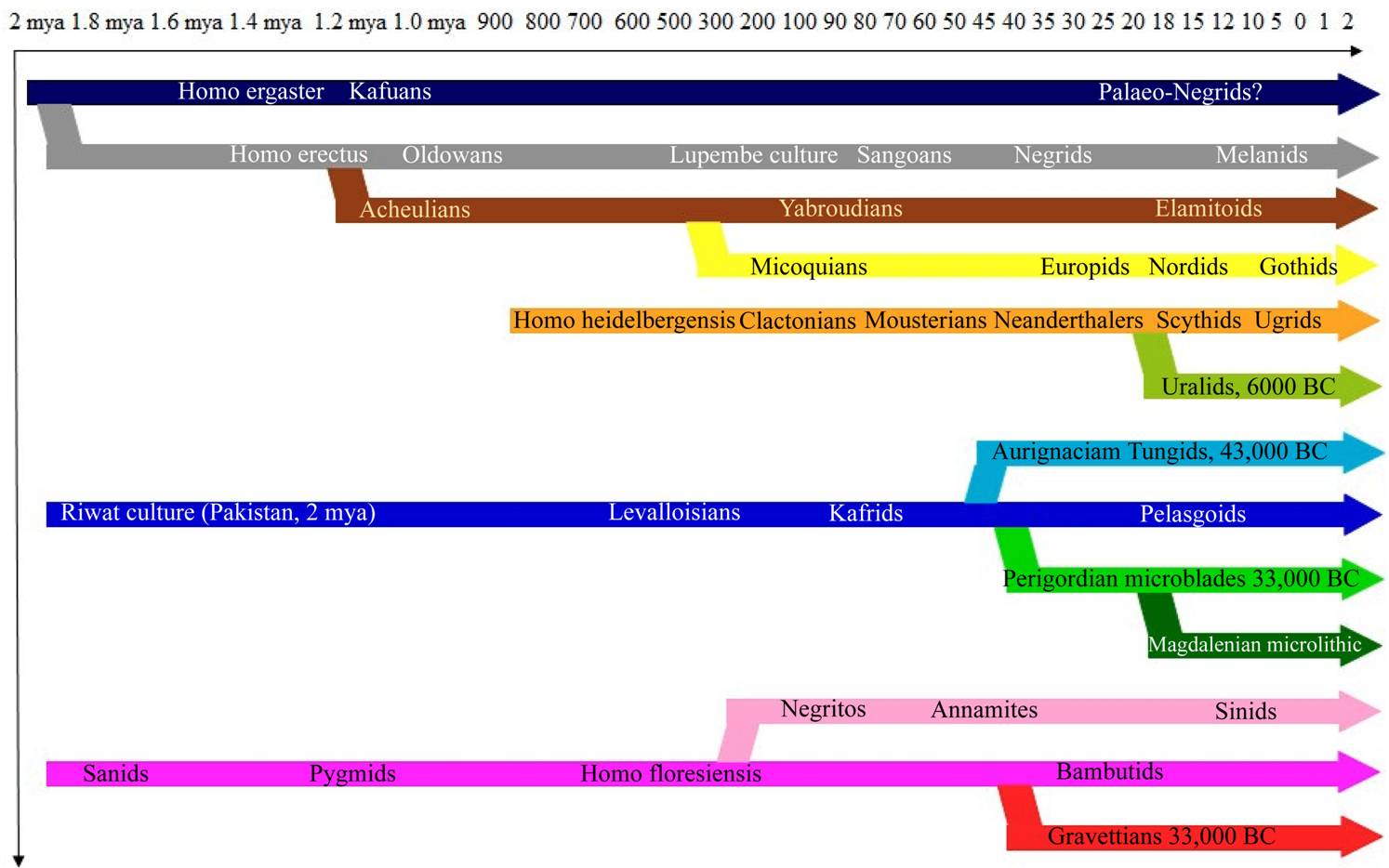|
|
|
||||||||||||
|
|
|
||||||||||||
|
|
|
|
|||||||||||
|
|
|
|
|||||||||||
|
|
|
|
|||||||||||
|
|
|
||||||||||||
|
|
|
|
|
||||||||||
|
|
The Paragenetic
Model of Human Evolution from Hominids Clickable terms are red on the yellow or green background |
|
|||||||||||
|
|
The
Theoretical Foundations of Anthropology, Ethnology and Prehistoric
Studies |
|
|||||||||||
|
|
|
|
|
||||||||||
|
The
Paragenetic Model of Human Evolution from Hominids The paragenetic model of prehistory presupposes
that most hominins and hominids lived in relative interbreeding and their genetic
distances were much nearer than now. What we denote as detached genera and
species were actually interfertile genetic races, strains, lineages, crosses
and hybrids that later lost mutual interfertility owing to isolation in
different hominoid populations. It is not plausible that they developed by
large jumps from one genus to another, they must have maintained and preserved
their genetic pool through progressive evolutionary metamorphoses. Many
categories of genus and species were only generations, so the extant binomial
and trinomial anthropological classification should adopt a special term for
transient generations. All strains underwent parallel processes of
hominisation, gracilisation and sapientisation by means of radical
revolutions and longer stages of conservative inertia. Hominins split off
hominids and hominoids as a special genetic stream competing with alternative
strains of Paranthropines and Australopithecines. Participation in different
population strains caused intraspecial differentiation. In the following
evolutionary series the symbol means digression while the arrow → implies genetic continuity. It does not
mean direct mother-daugher inheritance but a complex statistic process with
many digressions splitting off the dominant mainstream. The following series
are chief statistic mainstreams that suggest that the Palaeolithic Urrassen
had different ancestors but converged to one of predominant Neolithic racial
varieties. Tall robust
dolichocephalous herbivores with marked crista sagittalis Gigantopithecus
(9 mya) → Ouranopithecus (9 mya) (
Gorillas (9 mya)) → Paranthropus aethiopicus
(2.5 mya) ( Paranthropus robustus (2
mya)) → Australopithecus garhi
(2.5 mya) → Australopithecus sediba (1.8 mya) → Homo gautengensis (1.8
mya) → Homo erectus
(1.8 mya) → Oldowans (1.8 mya). Slender
piscivores with tall and leptoprosopic flattish faces: Proconsul africanus (23 mya) → Kenyanthropus platyops (3.5 mya) → Australopithecus afarensis (3.9–2.9 mya) → Homo
habilis (2.1–1.5 mya) → Homo rudolfensis (2–1.5 mya) →
Levalloisians (0.5 mya). Tall
brachycephalous carnivores and big-game hunters with narrow aquiline noses Australopithecus anamensis (4.5 mya) → Laetoli man → Homo heidebergensis →
Homo rhodensis (0.5 mya) ( Saldanha
man) →
Homo neanderthalensis → Mousterians. Shortsized brachycephalous omnivores: Ardipithecus ramidus (4.4
mya) → Ardipithecus kadabba ( Pan
paniscus (Bonobo)) → Australo-pithecus afarensis (3.9 mya) → Homo habilis →
Sanids → Pygmids ( Homo floresiensis) → Sinids.
Table 1. The paragenetic model of racial diversification |
|

